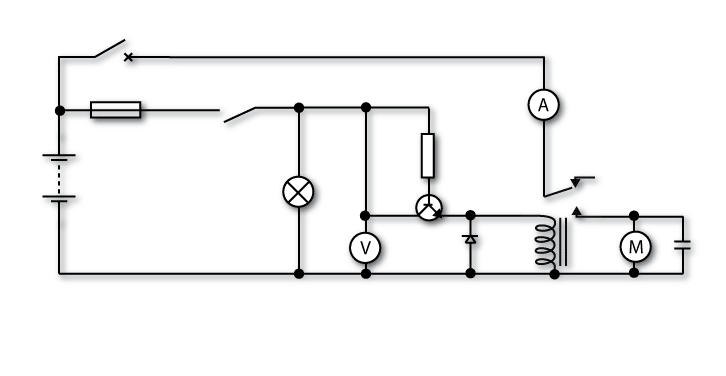The capacitor
Instructions:
For the 14 question:
- choose the correct answer
- write down your answer.
Note:
You can print this document and write your answers onto it.
Question 1
Capacitance can be described as the:
- flow of current
- ability to store a charge
- amount of electrical pressure
- amount of resistance.
Question 2
In a capacitor, what is the name given to the material separating the positive and negative plates?
- Resistor.
- Electrolyte.
- Diaphragm.
- Dielectric.
Question 3
The dielectric in a capacitor has the electrical property of:
- an insulator
- a conductor
- a battery
- a transistor.
Question 4
Which factors affect the capacitance value of a capacitor?
- Applied voltage, size of the plates and dielectric material.
- Size of plates and distance between plates and dielectric.
- Size of plates, applied voltage and the distance between plates.
Question 5
If the distance between the plates of a capacitor is increased, what happens to the capacitance value of the capacitor?
- Increases.
- Decreases.
- Remains the same.
Question 6
If the size of the plates of a capacitor is increased, what happens to the capacitance value of the capacitor?
- Increases.
- Decreases.
- Remains the same.
Question 7
In the following circuit diagram, locate the symbol of a capacitor. Draw a circle around it.

Question 8
What symbol is used to represent capacitance?
- Ω.
- V.
- Ca.
- C.
Question 9
What is the unit of measurement for capacitance?
- Volt.
- Farad.
- Henry.
- Coulomb.
Question 10
Draw the correct symbol for a standard capacitor in the space below.
Question 11
Draw the correct symbol for a variable capacitor in the space below.
Question 12
Draw the correct symbol for a trimmer capacitor in the space below.
Question 13
Draw the correct symbol for a polarised capacitor in the space below.
Question 14
In a circuit containing a capacitor, what is the value of current flow the instant the circuit is energised? (ie when the capacitor begins to charge.)
- Low.
- High.
- No current flows.
When you have finished:
- show your answers to your trainer
- close this window and choose a new activity from the menu.